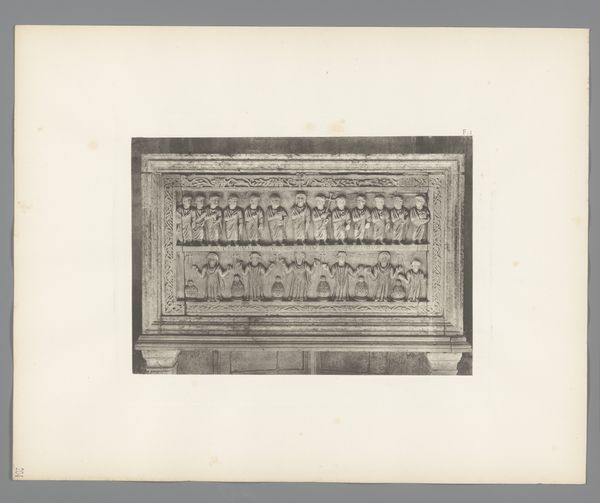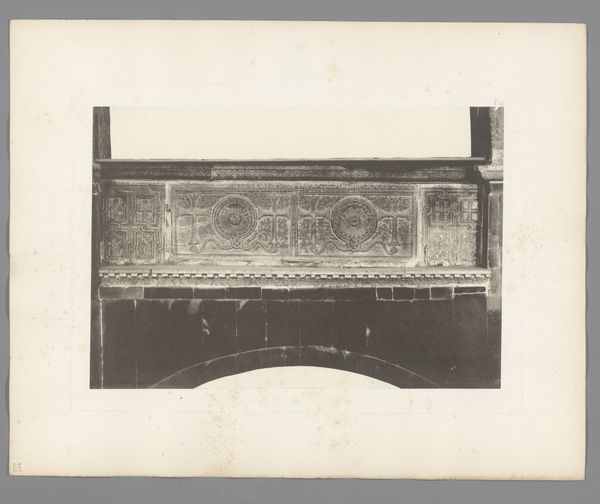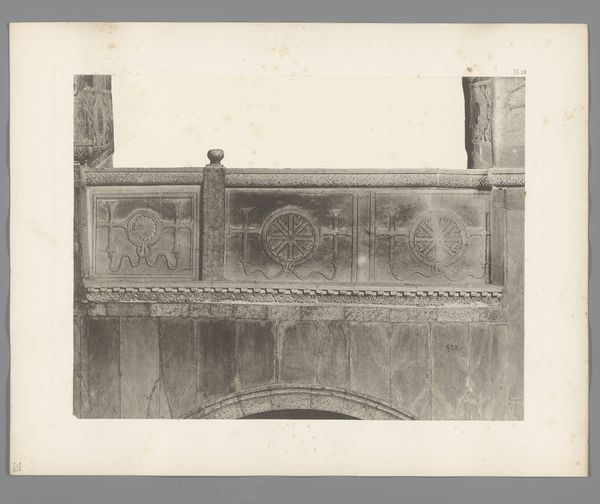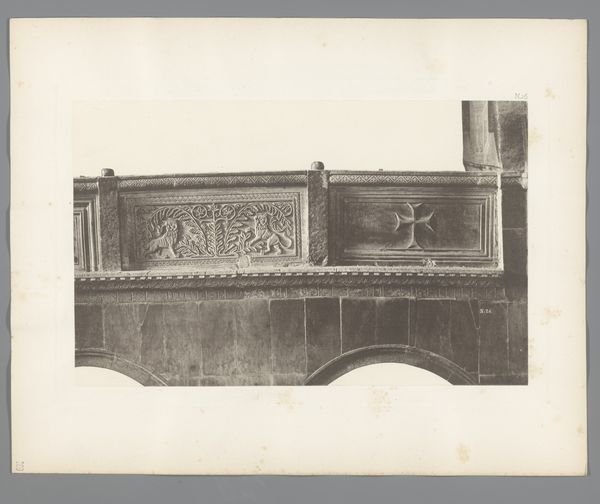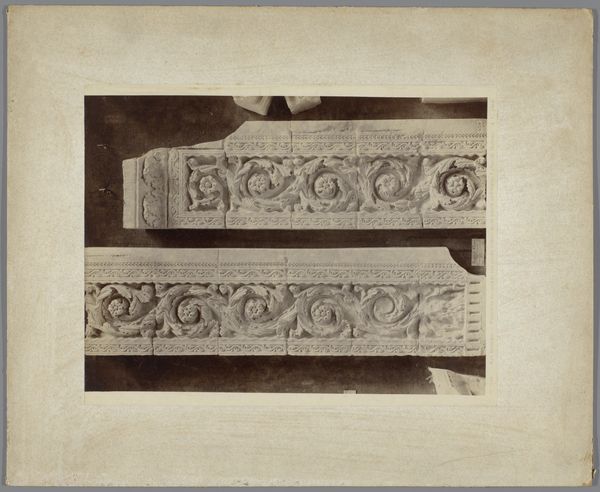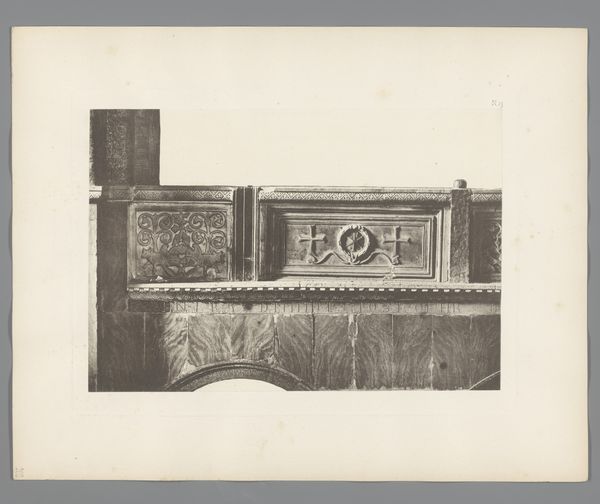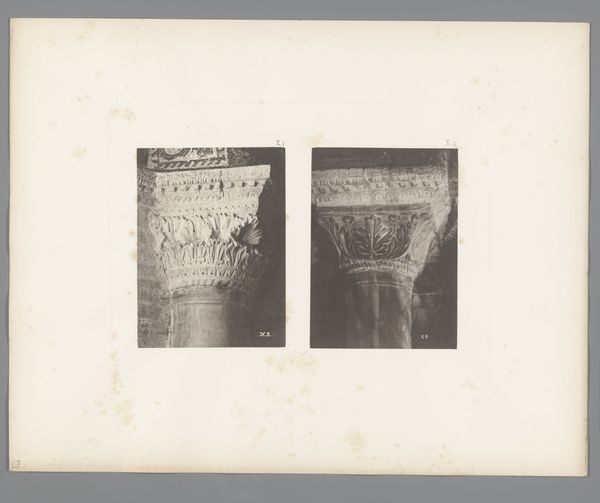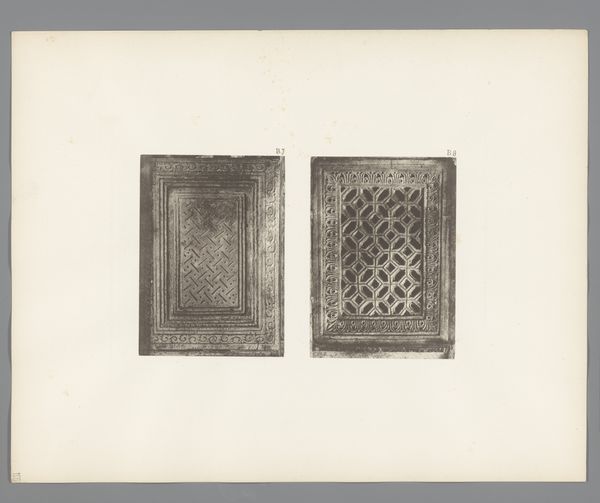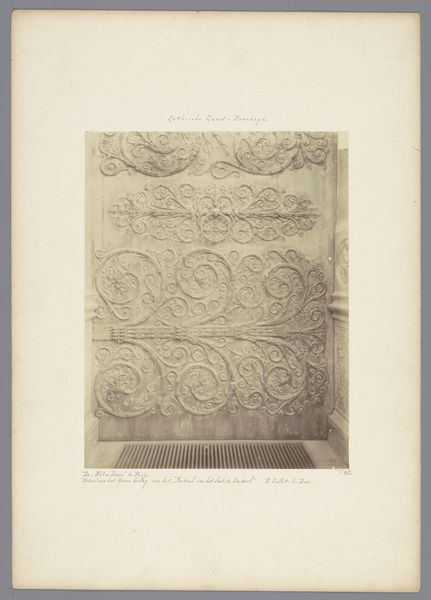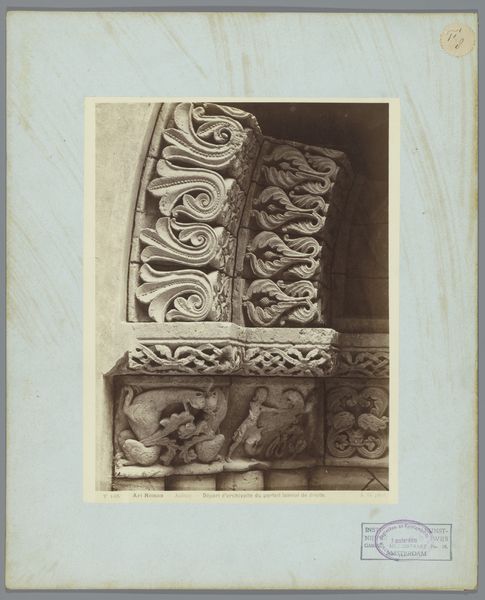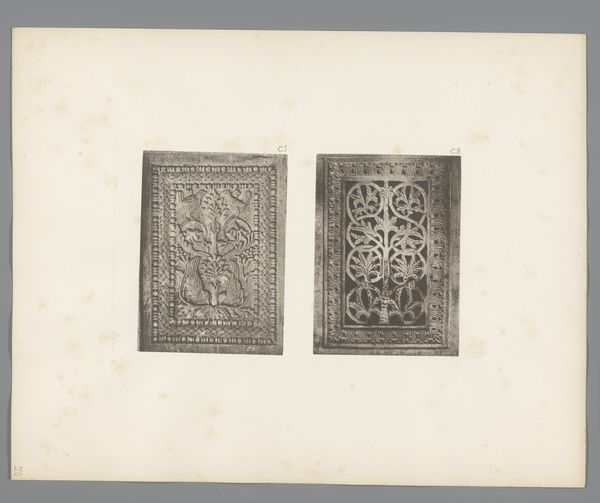
Reliëf van Maria, Christus en heiligen, van de San Marco in Venetië before 1885
0:00
0:00
drawing, carving, print, relief, paper, pencil, marble, engraving
#
drawing
#
aged paper
#
light pencil work
#
homemade paper
#
pale palette
#
medieval
#
carving
# print
#
light coloured
#
relief
#
sketch book
#
figuration
#
paper
#
11_renaissance
#
personal sketchbook
#
pencil
#
sketchbook drawing
#
history-painting
#
marble
#
sketchbook art
#
design on paper
#
engraving
Dimensions: height 312 mm, width 395 mm
Copyright: Rijks Museum: Open Domain
Curator: Here we have a drawing titled "Relief of Mary, Christ and Saints, from San Marco in Venice." It's attributed to Carl Heinrich Jacobi, created sometime before 1885. Editor: The pale palette lends a ghostlike quality to the scene, and the figures are so still and composed it reminds me of faded memories etched onto stone. What sort of statement could Jacobi have been hoping to convey with this particular subject and scene? Curator: It's likely part of a broader artistic and historical movement aimed at documenting and preserving cultural heritage, as architectural records. Consider that engravings, drawings, and other reproductive media were critical tools for disseminating knowledge about important sites and artifacts. Editor: That focus on documentation seems key, but perhaps misses a political point here? The artwork almost feels incomplete, caught between media. Marble, drawings, engravings - each captures just a facet of this devotional object. Doesn't the fragmented nature underscore how European societies historically consumed and redefined non-European cultural forms for themselves? Curator: While the reproduction arguably distances us, this approach to preservation reflects 19th century historical methodology: meticulous observation. Jacobi records details, construction methods, ornamentation. His focus remains documenting cultural landmarks for academic reference. Editor: But whose gaze benefits from this academic reference? How do these documents reflect or obscure the social context around their creation? Curator: Those are excellent questions, reminding us of the politics inherent in every image. Jacobi’s drawing provides valuable information, regardless of the motives that underpin art history. Editor: Ultimately it pushes us to think critically, not only about art but about who tells its story. A faint yet vital perspective that invites many diverse dialogues across cultural viewpoints, across historical moments, even in the face of presumed documentary neutrality.
Comments
No comments
Be the first to comment and join the conversation on the ultimate creative platform.
